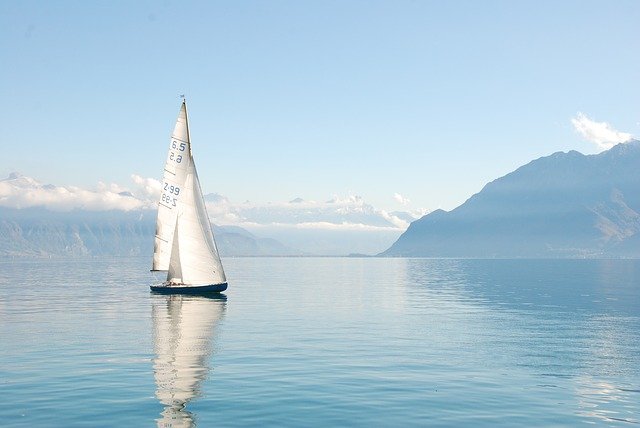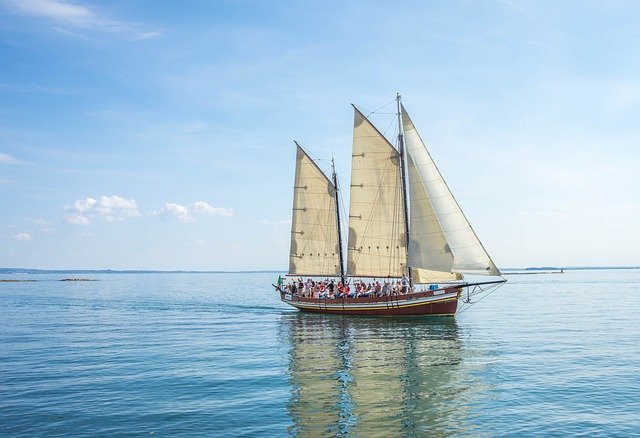According to research, the average American spends around ninety-three per cent of their life indoors. Only half a day of each week is spent outside. Thus, they cannot take advantage of all the health benefits of spending time outdoors.
So, what are the health benefits of spending time in nature? According to research, going outdoors can improve physical and mental health. It also decreases stress levels by lowering cortisol and increasing dopamine’s mood-regulating hormone.
Nowadays, there are endless possibilities when it comes to spending time outdoors. You can try a new sport such as football, baseball, golf and more. You can also try going to the mountains for a hike. In urban areas, parks are also easily accessible for a quick walk, or you can also give sailing a go.
Sailing is now becoming one of the people’s favourite pastimes. Why? Because there are so many options to choose from, you can either do it alone, you can also be part of an existing crew, or you can build your team.
Either way, sailing has an inherently collaborative nature which improves the interpersonal and intrapersonal skills that can help you succeed in today’s fast-paced and high-tech world.
Lessons To Be Learned
When sailing, there are lessons to be learned you can apply in real life.
Knowing The Current Conditions
Before planning on going out to set sail, you and your crew need to know where to go and have an idea about the current environmental conditions.
Therefore, you have to know the weather, is it sunny? Cloudy? How’s the wind? Will the waves and currents be strong? In addition, you need to have tools and equipment available to help you out.
In the context of personal goals and business, you need to know your goals or your targets. Also, you need to know the resources currently available to you right now. Understanding your current situation will help you map out a plan that will allow you to reach your goals and targets.
Having Key Roles
Another instance where we can apply the lessons from sailing in real life is when something goes awry. When something wrong happens while boating, nobody assigns fault, and all hands must be on deck. In addition, it gives importance to having critical roles in a group.
In this example, the helmsman has a vital role in assimilating all information, adjusting the boat’s heading and making a complete stop if required. In real life, the same thing goes, especially when handling a team or a business. A coach or a manager is needed to guide everyone on where to go and how to do it.
Consistent and Constant Communication
When sailing, constant communication is necessary to ensure forward momentum. Likewise, efficient and effective communication is critical in business so that the business process will work orderly.
When sailing, if there is a change in course or heading, a brief discussion among the crew is necessary to reduce the risk of unforeseen situations. In business, effective change management relies on a thorough review of the plan for pivoting. All scenarios are taken into consideration to ensure a higher chance of success than failure.
Quick Wit
Once sailing, situations may change, and challenges may arise; therefore, quick and innovative thinking is required. Everyone must be able to present multiple solutions before reaching a final decision.
Resourcefulness and unconventional thinking must survive when an organization or business is threatened. Especially when the pandemic hit, many organizations and businesses had to switch to doing things online or remotely immediately, and only those who could adjust could thrive.
Tools and Technology
Tools and technology come in handy when sailing. These two things enable you to have a better experience, and at the same time, they make boating more comfortable.
When it comes to organizations and businesses, tools and technology play an integral part in improving the processes by producing deliverables in a shorter amount of time. It also reduces human errors with the help of automation.
Doing Things Alone Vs. Doing Things With A Team
Single-handed sailing tests the character and endurance of the soloist. Team-sailing, on the other hand, fosters collaboration and synchronicity.
So if you want to improve your intrapersonal skills, such as your character and grit as an individual, you can try sailing on your own. But if you’re going to test your personality and improve your interpersonal skills, team-sailing is the way to go.
Now that you are interested in trying out sailing, you may be wondering what’s the best sailboat for you. There are various types of sailboats in the market. Let’s try to discuss the details of each kind of classification below.
Based on Hull
Sailboats can be classified into three types depending on their primary hull design.
Monohulls

Traditionally these are the most common designs for sailboats. This is because they provide a certain level of vessel stability and have additional storage. But, with more sailing competitions sailing enthusiasts now focus on performance and stability more than storage.
Monohulls are single-hulled structures that are much like conventional vessels, and they have a large hull beam for stability and longer beams for better onboard systems.
Catamarans
These are twin-hulled structures that offer an increased level of stability. In addition, they have a higher speed than conventional crafts due to their lower wetted-surface resistance forces. But, extensive care must be taken when designing catamarans because the resistive power can be more than the values found in monohulls, making it difficult to move.
Multi-hull crafts
These are vessels with three to five hulls. Among these, the three-hull variation is the most common and these crafts are also known as trimarans. These are considered highly stable because of their large beam and lower centre of gravity.
According to data, four and five-hulled vessels are more difficult to manufacture, so they are rarely used commercially.
Based on Design
Monohull designs are easier to manufacture; therefore, there’s a broader range of options in the market. Let us check each one below.
Dinghy
A dinghy is a typical sailboat with a short length and easy manoeuvring. It’s mainly used in competitions and the port industry. Often, dinghies are used to transport people or small cargo to and from a larger vessel like a cruise ship.
Some dinghies have sails, and motor-powered ones are available in the market. Nowadays, there are also hybrids in the market, such as lightweight catamaran dinghy.
Cutters
Cutters are medium-sized sailboats with three sails. The main mast is usually located near the ship’s stern to allow larger sails.
Cutters are usually used in competitions because of their speed and agility. On the other hand, some cutters are used for cruises and other recreational activities.
Sloops
These are similar to cutters and are most commonly found due to their standard sail design and manoeuvrability.
Ketch
This is a sailboat that has two main masts. Its name is derived from the word catch because the sails “catch” the wind as they move.
Schooners
These are sailboats that can have more than two sails supported on masts.
Based on Keel
Sailboats can also be classified based on their keel. The keel is the vessel’s base, which works as the central backbone of the boat’s design. Again, it’s structurally relevant because it carries the entire weight of the ship.
Fin keels
Located on the craft’s underside, it usually sticks out like a fish’s fin. Fin keels are often found in catamarans and trimarans.
Centreboard keel
This type of fin has a pivot that allows a natural flow when in water. In addition, the crew can manually change the angle of tilt that can affect the boat’s performance during certain events and competitions.
One variation of the centreboard keel is the daggerboard keel that allows the fin to integrate into the bottom of the vessel completely.
Bilge keel
These are the protrusions on the sides of the boat’s hull, also known as bilges. These run along the vessel’s length and tapers into the hull panels at each end. These keels improve the rolling stability of the craft. The fins are perpendicular to the hull, and their length can vary depending on their purpose.
For example, sailboats requiring more extensive anti-roll stability have longer tapered bilge keels.
Bulb keel
This protrusion is located vertically below the craft and ends in an oblong-shaped hydrodynamic device called the bulb. The bulb improves the vessel’s stability, making it easier to handle. For smaller boats, longer bulb keels are required.
In addition, an increase in the wetted surface area causes the speed to drop. Therefore, superior handling capabilities are required to compensate for such scenarios.
Wing keel
A wing keel is similar to a bulb keep, but horizontal hydrofoils stretch from the main shaft instead of the bulb terminating at a vertical protrusion.
The primary purpose of the wings is to improve their handling and stability. They also lift the craft above the water’s surface, which decreases the total wetted surface area. Hence, the speed remains constant and may even improve as the vessel increases its velocity.
Based on Mast
The mast is the vertical shaft that extends out of the deck, and it supports the sails and rigging. Older sailboats had masts made of wood, but nowadays, galvanized steel or aluminium are used.
Sloop
The most common mast type is wherein a single mast supports two sails called the mainsail and the headsail.
Fractional Rig Sloop
This is used to hoist the headsail placed right below the top of the mast.
Ketch
This has a two-mast configuration. Most of the time, the mizzenmast is located in front of the rudder post and after the mainmast.
Mizzen Sail

This rests on the mizzen mast, and it’s slightly shorter than the mainmast.
Schooner
This is similar to the ketch, but the aft mast is taller than the foremast. In addition, schooners can have several masts, and they are not restricted to small and medium-sized boats. Ancient ships used for trade and military purposes had four to six masts with over ten sails each.
In terms of design, the schooner’s sails are usually along the vessel’s length to prevent sail rupture during heavy winds or violent storms.
In over a thousand years, sailboats have developed into sleek and agile vessels capable of reaching highly incredible speeds, making it one of the sports best suited for those who would like to experience the thrill.
In addition, as more people are becoming interested in sailing for recreation purposes, it is essential to know which category you would like to explore so you can check out and choose the best boat for your needs.
